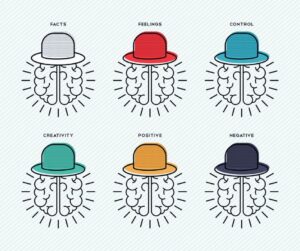Have you ever wondered why you buy certain products? Or what influences your choices when you’re out shopping?
The answers lie in the fascinating world of consumer decision-making.
It’s a journey that begins long before you step into a store or click “add to cart” online. This process is like a thrilling detective story, and we’re going to solve the mystery together!
What is the Consumer Decision Making Process?
The consumer decision-making process is a series of steps that people go through when they have a need or want and must decide how to satisfy it. It’s like a journey with different stops along the way. This process helps explain why consumers make the purchases they do and what influences their decisions.
It all starts with a problem or need. Maybe your favorite pair of sneakers is worn out, or you’re craving a delicious pizza. Once you recognize this problem, you begin to gather information about potential solutions. You might ask friends for recommendations, search online, or pay attention to ads.
After gathering information, you evaluate your options and weigh the pros and cons of each choice. This is where you consider factors like price, quality, and features.
Finally, you make your purchase decision and take action, whether it’s buying those new sneakers or ordering that tasty pizza.
But the journey doesn’t end there! After your purchase, you evaluate how satisfied you are with your choice. This post-purchase behavior can influence your future decisions and brand loyalty.
The Five Stages of the Consumer Decision Process
Now, let’s dive deeper into the five stages of the consumer decision-making process:
Stage 1: Problem Recognition
This is where the journey begins. You recognize that you have an unmet need or want. It could be something as simple as feeling hungry or as complex as needing a new car. This problem recognition can be triggered by internal factors (like hunger or a broken appliance) or external factors (like an advertisement or a friend’s recommendation).
Stage 2: Information Search
Once you’ve identified your problem, you start looking for solutions. This is the information search stage. You might gather information from personal sources (like friends and family), commercial sources (like advertisements and salespeople), public sources (like consumer reports and online reviews), or through personal experience.
The information search stage is crucial because it helps you understand your options and make an informed decision. The more information you have, the better equipped you’ll be to evaluate the alternatives and choose the best solution for your needs.
Stage 3: Evaluation of Alternatives
After gathering information, you enter the evaluation stage. Here, you weigh the pros and cons of each option, considering factors like price, quality, features, and brand reputation. You might create a mental checklist or even a physical list to compare your choices.
This stage is where emotions and personal preferences come into play. You might prioritize certain features or brand names based on your values, past experiences, or even your mood at the time.
Stage 4: Purchase Decision
Once you’ve evaluated your alternatives, it’s time to make your purchase decision. This is the moment of truth where you choose the product or service that best meets your needs and desires.
Your purchase decision can be influenced by various factors, such as:
- Price
- Availability
- Convenience
- Recommendations from others
- Personal preferences and values
Sometimes, you might even experience cognitive dissonance – a feeling of doubt or anxiety after making your decision. This is perfectly normal and can be resolved through positive reinforcement or seeking reassurance.
Stage 5: Post-Purchase Behavior
The consumer decision-making process doesn’t end with the purchase. In the post-purchase stage, you evaluate your satisfaction with the product or service. This evaluation can lead to one of three outcomes:
- Satisfaction: If you’re happy with your purchase, you’re more likely to become a loyal customer and recommend the product to others.
- Dissatisfaction: If you’re unhappy with your purchase, you might return or exchange the product, complain to the company, or simply avoid the brand in the future.
- Cognitive Dissonance: Sometimes, even if you’re satisfied with your purchase, you might experience cognitive dissonance – a feeling of doubt or anxiety about your decision. This can be resolved through positive reinforcement or seeking reassurance.
Your post-purchase behavior can have a significant impact on your future decisions and brand loyalty.
Factors Influencing Consumer Decisions
The consumer decision-making process is influenced by a variety of factors, both internal and external. Understanding these factors can help marketers create more effective strategies and consumers make better-informed choices.
Internal factors are personal and unique to each individual. They include:
- Motivation: The driving force behind a consumer’s behavior, such as physiological needs (hunger, thirst) or psychological needs (belonging, esteem).
- Perception: How a consumer interprets and organizes information from their senses.
- Personality: The unique combination of traits and behaviors that characterize an individual.
- Attitudes: A consumer’s enduring beliefs and feelings toward a product, brand, or situation.
- Learning: The process by which consumers acquire knowledge and experience that influences their future behavior.
External factors, on the other hand, are environmental influences that can affect consumer decisions:
- Culture: The shared values, beliefs, and customs of a society or group.
- Social Class: The hierarchical division of society based on factors like income, education, and occupation.
- Reference Groups: The groups (family, friends, coworkers) that influence a consumer’s behavior and attitudes.
- Family: The immediate and extended family members who can significantly impact a consumer’s decisions.
- Marketing Efforts: The strategies and tactics used by companies to promote their products or services.
By understanding these factors, both consumers and marketers can navigate the decision-making process more effectively.
The Psychology Behind Consumer Choices
The consumer decision-making process is deeply rooted in psychology. Understanding the psychological principles at play can help us better comprehend why we make the choices we do.
- Cognitive Biases: Our brains are wired with cognitive biases that can influence our decisions in ways we might not even realize. For example, the confirmation bias leads us to seek out information that confirms our existing beliefs, while the anchoring bias causes us to rely too heavily on the first piece of information we receive.
- Emotions: Emotions play a significant role in consumer decision-making. We often make choices based on how we feel at the time, rather than purely rational factors. Marketers frequently tap into emotions like fear, joy, or aspirations to influence consumer behavior.
- Heuristics: We rely on mental shortcuts or rules of thumb (heuristics) to simplify complex decisions. While these can be useful, they can also lead to biased or irrational choices.
- Social Influences: As social creatures, we are heavily influenced by the opinions and behaviors of others, particularly those in our reference groups. This is why word-of-mouth marketing and social proof are so powerful.
- Habits and Routines: Many of our consumer decisions are driven by habits and routines that we’ve developed over time. Breaking these patterns can be challenging, but it also presents opportunities for marketers to disrupt established behaviors.
By understanding these psychological principles, both consumers and marketers can navigate the decision-making process more effectively and make more informed choices.
Marketing Strategies and the Decision Process
Marketers use various strategies to influence and guide consumers through the decision-making process. By understanding how consumers make decisions, marketers can tailor their approaches to be more effective and persuasive.<Relevant Diagram Showing How Marketing Strategies Map to the Decision Process Stages>
Problem Recognition Stage
At this initial stage, marketers aim to create awareness and trigger the consumer’s need or want. They might use attention-grabbing advertisements, promotions, or even product placements to highlight a problem or opportunity.
Information Search Stage
During the information search stage, marketers strive to be present and easily accessible wherever consumers are looking for information. This includes platforms like search engines, social media, review sites, and even in-store displays or sales representatives.
Evaluation of Alternatives Stage
As consumers evaluate their options, marketers work to position their products or services as the superior choice. They might emphasize unique features, competitive pricing, or positive customer reviews to sway the consumer’s decision.
Purchase Decision Stage
At this crucial stage, marketers focus on removing barriers to purchase and making the process as convenient and seamless as possible. This could involve offering enticing promotions, flexible payment options, or easy online ordering and delivery.
Post-Purchase Behavior Stage
Even after the sale, marketers continue their efforts to foster customer satisfaction and loyalty. They might provide excellent customer service, follow-up communications, or opportunities for product reviews and feedback.
By aligning their strategies with each stage of the consumer decision-making process, marketers can effectively guide consumers toward their desired outcomes.
TL;DR
In summary, the consumer decision-making process is a journey that involves recognizing a need or want, gathering information, evaluating alternatives, making a purchase decision, and evaluating post-purchase satisfaction.
This process is influenced by various internal and external factors, as well as psychological principles like cognitive biases, emotions, and social influences.
Marketers use strategies tailored to each stage of the decision process, aiming to create awareness, provide information, position their offerings as superior choices, facilitate purchases, and foster customer loyalty.
Understanding the consumer decision-making process is crucial for both consumers and marketers alike. It empowers consumers to make more informed choices and helps marketers develop more effective strategies to meet consumer needs and desires.
Q&A
Q: What is the first stage of the consumer decision-making process? A: The first stage is problem recognition, where the consumer identifies an unmet need or want.
Q: How do emotions influence consumer decisions? A: Emotions play a significant role in consumer decision-making. We often make choices based on how we feel at the time, rather than purely rational factors. Marketers frequently tap into emotions like fear, joy, or aspirations to influence consumer behavior.
Q: Why is the post-purchase stage important? A: The post-purchase stage is important because it affects the consumer’s satisfaction with the purchase and can influence future decisions and brand loyalty. Positive post-purchase experiences can lead to repeat business and recommendations, while negative experiences can result in complaints, returns, and avoidance of the brand.
Q: What is the role of reference groups in consumer decision-making? A: Reference groups, such as family, friends, and coworkers, can significantly influence a consumer’s behavior and attitudes. We often seek advice or validation from these groups when making purchasing decisions, and their opinions can sway our choices.
Q: How can marketers effectively target consumers during the information search stage? A: During the information search stage, marketers should strive to be present and easily accessible wherever consumers are looking for information. This includes platforms like search engines, social media, review sites, and even in-store displays or sales representatives. Providing relevant and helpful information can guide consumers toward their products or services.





